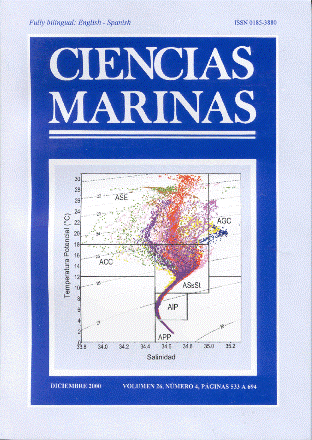Taphonomic processes in recent thanatocenoses at playa el pelícano, baja california
Main Article Content
Abstract
The northeastern coast of Baja California (Mexico) has extensive surface mollusk-shell deposits in exposed, semiprotected or protected sandy beaches. Waves, tides, currents and sediment transport influence the shell concentrations in the intertidal zone and control the morphology of these beaches. In order to evaluate the taphonomic processes involved in the formation of shell deposits in an exposed beach, we studied temporal changes in thanatocenoses of bivalves along 200 m of beach at spring tides in March, May and November 1993, and March and November 1994. Species were identified and their size, orientation (concave-up vs concave-down) and azimuth orientation of the anterior-posterior axis were measured. The assemblage was dominated by Glycymeris gigantea and included 15 common species. The shells showed a variable azimuth orientation, but with a trend parallel to the coastline, predominance of downward concavity and a polymodal size distribution with modes in 1 and 3 cm, in a size range of 0.3 to 8.5 cm. The taphonomic characteristics of these shell deposits may be useful in coastal paleoceanographic reconstructions.
Downloads
Article Details
This is an open access article distributed under a Creative Commons Attribution 4.0 License, which allows you to share and adapt the work, as long as you give appropriate credit to the original author(s) and the source, provide a link to the Creative Commons license, and indicate if changes were made. Figures, tables and other elements in the article are included in the article’s CC BY 4.0 license, unless otherwise indicated. The journal title is protected by copyrights and not subject to this license. Full license deed can be viewed here.

